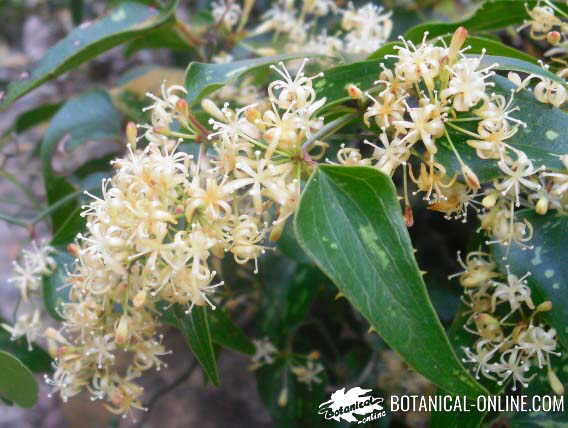Contents
- 1 What is a bala plant?
- 1.1 Characteristics of Sida cordifolia
- 1.2 Description of bala
- 1.3 Active principles of Sida cordifolia
- 1.4 PROPERTIES OF SIDA CORDIFOLIA
- 1.5 Medicinal uses of bala
- 1.6 How is Sida cordifolia used?
- 1.7 Toxicity of Sida cordifolia
- 1.8 Side effects of Sida cordifolia
- 1.9 Symptoms of poisoning with Sida cordifolia
What is a bala plant?
Characteristics of Sida cordifolia
Scientific noun: Sida cordifolia
Common noun:: Bala, flannel weed, country mallow
Family: Mallow family –malvaceae
Habitat: Native from tropical America, it has spread along many tropical regions in the world, where propagates so fast to be considered an invasive herb. This generally occurs in very spoiled soils because of the heavy rains, excessive hot or uncontrolled grazing.
Description of bala
Perennial shrub of the mallow family up to 1 m.
Erect stems, ligneous.
Leaves cordate, hairy with serrate edge.
Yellow flowers, gathered in final inflorescences. Fruit in capsule.
Active principles of Sida cordifolia
- Resins
- Essential oils
- Alkaloids: ephedrine, pseudoephedrine, vasicinone, vasicine and vasicinol
- Active parts: Seeds, leaves and roots
PROPERTIES OF SIDA CORDIFOLIA
Medicinal uses of bala
Stimulating preparations with bala: The seeds are used as heart stimulant, although, for its content in ephedrine, they can be toxic. Ephedrine, (efedra, Sida cordifolia) caffeine, (coffee, mate, guarana,) or sinephedrine, (sour orange, Sida cordifolia) enter as components of many stimulating medications, to alleviate the pain, to remove the sensation of hunger – nutritious diets – or to increase the caloric expense, by accelerating the metabolism.
Many athletes also use this component in preparations to increase musculación. Among other effects the ingesta of this component can aim at other objectives as the feeling of personal well-being or bigger sexual pleasure.
Home remedies with bala: The bronchodilator value of vasicinone, vasicine and vasicinol are used to elaborate preparations for the treatment of the bronchial affections, especially in what refers to cough, asthma, bronchitis, nasal congestion, flu, pain in the chest, etc.
Being considered a diaphoretic – it increases perspiration- it has an added value to fight the previous affections, at the same time that it is very appropriate to reduce fever. (Decoctions of the root)
Bala leaves preparations for external use: With the crushed leaves a cataplasm can be carried out to alleviate local pains and because of its astringent value for the cure of external wounds or imperfections of the skin.
Bala in Ayurveda: In India it is considered an ayurvedic plant. Ayurveda is a system of holistic medicine in India, with more than 5000 years of antiquity that conceives the health like the result of a lifestyle in general, in which the body, the mind and the spirit form a whole.
How is Sida cordifolia used?
Given the toxicity of its components it is not advised to use bala in home-made preparations!!!
Toxicity of Sida cordifolia
The continuous use of products with ephedrine can suppose a series of risks to health:
Side effects of Sida cordifolia
Its effects, similar to those of the amphetamines, can be more counteractive when ephedrine is taken in combination with other stimulants, especially with caffeine.
One has to keep in mind that many products considered as natural medicines either to diminish weight, or for the treatment of breathing ailments, contain this component.
Because not being aware of its presence, or when ignoring its contraindications, a prolonged use, specially combined with other stimulants, can be harmful. On the other hand, we don’t have to forget that the mentioned alkaloid needs every time higher doses to achieve the same objectives. For these reasons many states of United States have prohibited the use of ephedrine in dietary complements
Symptoms of poisoning with Sida cordifolia
The main symptoms of having been poisoned with bala are the following:
- Hypertension
- Arrhythmia
- Headache
- Tremors
- Sickness
- Insomnia
- Tachycardia
- Heart illness
- Hepatic illness
- Heart attack.
Prevention: Avoid a prolonged used of products containing ephedrine.
![]() More information about plants.
More information about plants.








